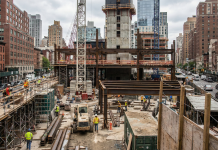A single home in Olympia attracted 2,901 views in 30 days. Not 2,901 homes. One property.
Most of those viewers won’t buy. But that engagement reveals demand waiting beneath current market constraints.
Redfin’s analysis of most-viewed homes across U.S. metros through October 27, 2025 shows steady activity despite tough conditions. View counts varied dramatically by region. Olympia’s top listing drew 2,901 views. Toledo’s most popular home attracted just 444.
Browsing continues whether buyers can afford to purchase or not.
Why This Isn’t Just Window Shopping
Some will dismiss this as idle browsing. People killing time on Zillow with no real intent.
The data says otherwise.
When buyers get serious, they go online first. About 41% of home buyers initiated their property search online in recent data. Listings with video receive 403% more inquiries than those without. That level of engagement signals intent, not boredom.
People are researching properties they cannot afford to buy yet. They’re building wish lists, tracking neighborhoods, monitoring prices.
The National Association of Home Builders estimates pent-up demand for up to 4.5 million homes across the United States. That demand materializes between 2025 and 2030 as market conditions improve. Sustained browsing during tight markets means demand is stored, not gone.
What Olympia’s Numbers Tell You
Olympia’s top listing drew 2,901 views. That’s 6.5 times more engagement than Toledo’s most popular home.
High engagement relative to market size signals concentrated demand. When constraints ease through falling rates or better affordability, markets like Olympia will see transactions accelerate first.
ConstructConnect projects total construction spending growth of 8.5%, with residential construction expanding 12% in 2025. After contracting 14% in 2023 and another projected 7% by year-end 2024, the sector will rebound sharply. Markets with the highest view counts will lead that rebound.
Compare this to broader patterns. Redfin’s data showed price points ranged from under $50,000 in Lima to a $14.5 million luxury mansion in Orlando’s Golden Oak community. Waterfront and resort-area properties commanded premium prices. But raw price matters less than engagement intensity.
What Builders Should Do Now
Start tracking view count data in your target markets. Redfin publishes most-viewed home lists monthly through local news partnerships. Search “[your city] most viewed homes Redfin” to find recent reports.
Compare view counts to local inventory levels. High views with low inventory means you’re looking at a supply-constrained market ready to pop.
Watch which property types get the most engagement. Single-family homes dominating views? That’s your signal. Luxury estates getting traction? Different play. Match your pipeline to actual buyer interest, not what you think they want.
Here’s the strategic choice: Interest spans from affordable fixer-uppers to luxury estates across different markets. If you’re in a market with diverse engagement, diversify your portfolio. If one property type dominates views in your area, specialize there. The data tells you which path to take.
Time your projects to hit the market as constraints ease. Browsing continues because housing need remains unmet. As conditions improve, that browsing converts to buying.
The Risk Nobody’s Talking About
This analysis assumes rates fall and affordability improves. But what if rates stay elevated longer than expected?
That stored demand could evaporate if economic conditions worsen or if buyers adjust expectations downward permanently. High browsing activity today doesn’t guarantee transactions tomorrow.
Smart builders hedge this risk. Don’t overcommit to markets based solely on view counts. Use this data as one signal among many. Watch building permits, employment trends, and wage growth in high-engagement markets.
The question isn’t whether demand exists today. It’s whether you’re positioned in the right markets with the right product when conditions shift. And whether you can survive if that shift takes longer than forecasts predict.








